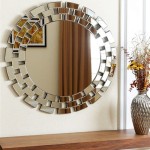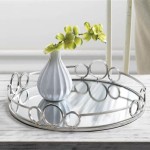Types of Mirrors in Cars
Automotive mirrors are crucial safety features, providing drivers with essential visual information about their surroundings. They extend the driver's field of vision beyond what can be seen directly through the windshield and rear window, aiding in lane changes, parking, and general awareness of other vehicles and obstacles. Understanding the different types of mirrors in a car and their specific functions is paramount for safe and effective driving.
Plane Mirrors: The Side View Mirrors
Plane mirrors, characterized by their flat reflective surface, are commonly used for side view mirrors in most vehicles. These mirrors provide a virtual image that is the same size and distance from the mirror as the actual object. While they offer a wide field of view, plane mirrors also present a slight distortion of distance, often making objects appear farther away than they actually are. This phenomenon is why the phrase "objects in mirror are closer than they appear" is often printed on passenger-side mirrors in some regions. This warning cautions drivers about the perceived distance discrepancy, encouraging more careful judgment when changing lanes or merging.
Some newer vehicles incorporate features like blind spot monitoring systems to supplement the information provided by plane side view mirrors. These systems utilize sensors to detect vehicles in adjacent lanes that might not be immediately visible in the mirrors, providing an additional layer of safety and reducing the risk of collisions during lane changes.
Convex Mirrors: Expanding the Field of View
Convex mirrors, recognized by their outwardly curved reflecting surface, are sometimes used for passenger-side view mirrors. These mirrors provide a wider field of view than a plane mirror of the same size, allowing the driver to see a larger area around the vehicle. The trade-off for this expanded view is that objects appear smaller and even farther away than in a plane mirror. This increased distortion of distance reinforces the importance of understanding the limitations of convex mirrors and using them in conjunction with other visual cues and safety systems.
The use of convex mirrors for the passenger-side view mirror can vary based on regulations and manufacturer preferences. Some countries mandate their use for passenger-side mirrors to maximize the driver's field of view, while others permit the use of either plane or convex mirrors.
Aspherical Mirrors: Combining the Best of Both Worlds
Aspherical mirrors represent a more sophisticated approach to automotive mirror design. These mirrors feature a surface that combines both flat and curved sections, offering a hybrid solution that aims to minimize the drawbacks of both plane and convex mirrors. The center portion of an aspherical mirror is typically flatter, providing a less distorted view of objects directly behind the vehicle, while the outer portions are curved outwards, expanding the field of view and reducing blind spots.
This combination of flat and curved sections allows aspherical mirrors to provide a wider field of view than a plane mirror while simultaneously minimizing the distortion of distance typical of convex mirrors. This makes them particularly suitable for driver-side view mirrors where a clear and accurate perception of distance is critical for safe lane changes and merging.
Interior Rearview Mirrors: Monitoring the Rear
The interior rearview mirror, typically located at the top center of the windshield, provides the driver with a view of the area directly behind the vehicle. This mirror is usually a plane mirror, offering an undistorted view of following traffic and assisting with tasks like reversing and monitoring the condition of passengers or cargo in the rear seats.
Many modern vehicles equip the interior rearview mirror with an automatic dimming feature. This electrochromic technology automatically darkens the mirror's surface to reduce glare from the headlights of following vehicles at night, significantly improving visibility and driver comfort.
The Importance of Proper Mirror Adjustment
Regardless of the type of mirrors a vehicle utilizes, proper adjustment is paramount for maximizing their effectiveness. Drivers should adjust their side view mirrors to minimize blind spots, ideally positioning them so that only a small portion of the vehicle's side is visible. The interior rearview mirror should be adjusted to provide a clear view of the entire rear window.
Regularly checking and adjusting mirrors is a fundamental aspect of safe driving practices, allowing drivers to maintain optimal awareness of their surroundings and make informed decisions on the road. This simple act can significantly enhance driving safety and prevent accidents.
The development and implementation of various mirror types in automobiles reflect a continuous effort to improve driver visibility and road safety. Understanding the specific characteristics and limitations of each mirror type empowers drivers to utilize these essential tools effectively and navigate the roads with increased confidence and safety.

Diffe Types Of Car Mirrors Ace Glass

What Are The Diffe Types Of Car Mirrors Sunway Autoparts

Why The Side Mirrors Majorly Of All Heavy Vehicles Are Small In Size Quora

Side View Mirror Replacements For Cars Trucks 1a Auto

Convex Mirrors Use Car

Side View Mirror Wikipedia

Difference Between Side Mirror And Rear View Learn Driving Tips

Car Mirrors Are A Very Important Part Of And With The Right Knowledge You Can Have Fulfilling Life 株式会社ネクスビジョン 自動車ミラー ガラス製ミラー製造 埼玉県川越市芳野台2 8 15

Concave Vs Convex Mirrors In Cars

Rear View Mirror Wikipedia








